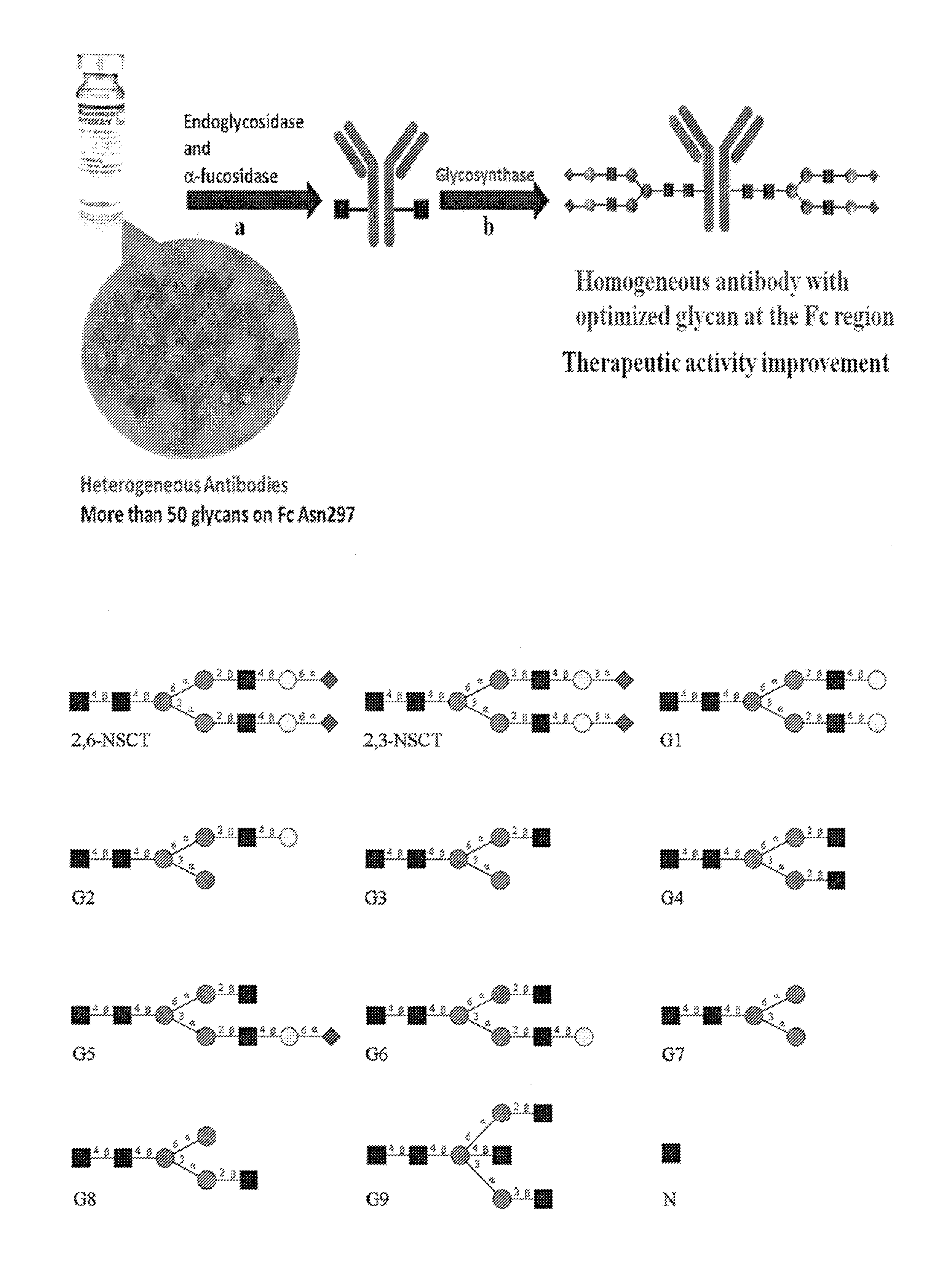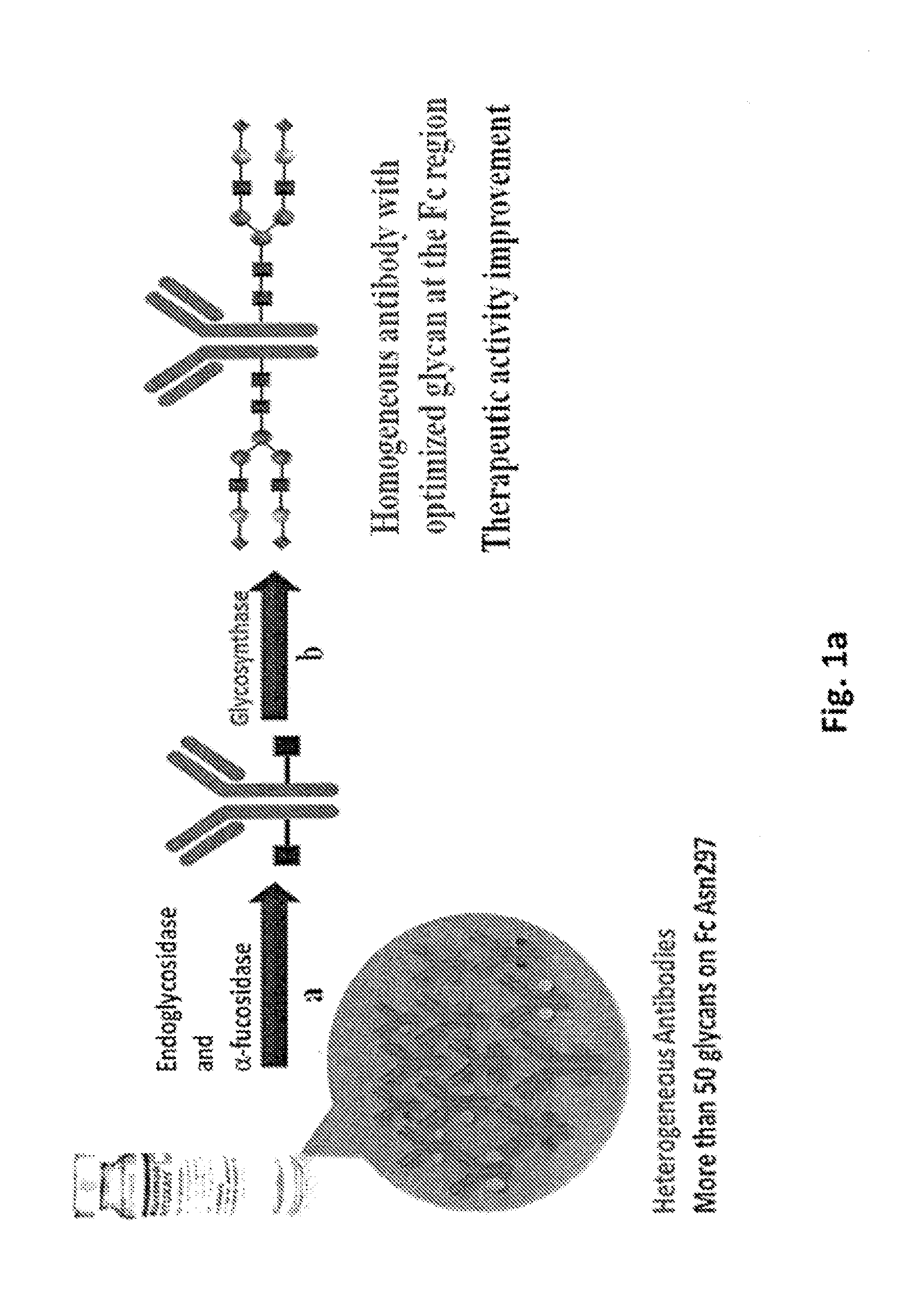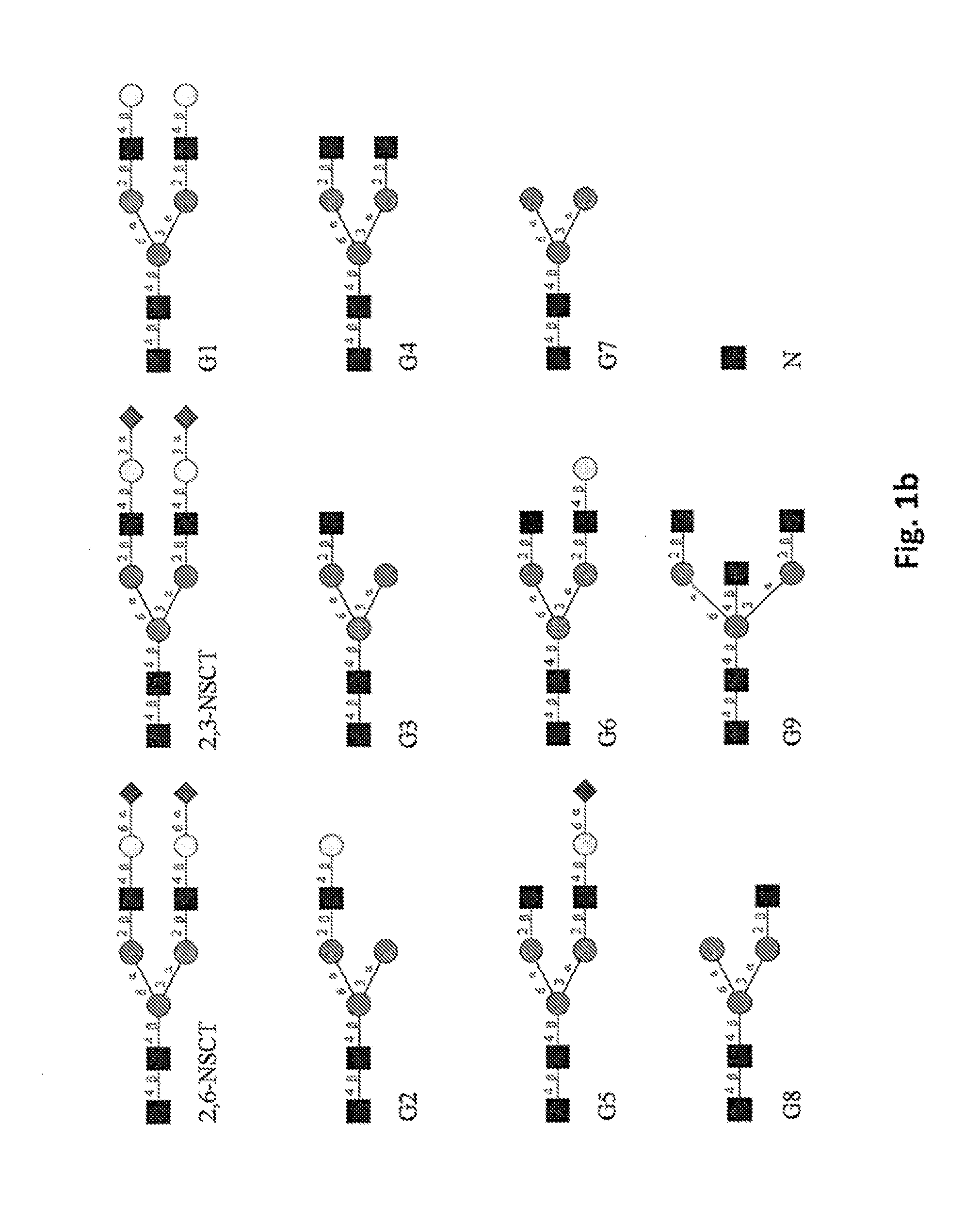Compositions and methods relating to universal glycoforms for enhanced antibody efficacy
a technology of universal glycoforms and enhanced antibody efficacy, which is applied in the field of compositions and methods relating to universal glycoforms for enhanced antibody efficacy, to achieve the effect of enhancing the effect of effector cell function
- Summary
- Abstract
- Description
- Claims
- Application Information
AI Technical Summary
Benefits of technology
Problems solved by technology
Method used
Image
Examples
example 1
Glycoengineering of IgG1 Antibody
[0260]The goal of this study is to prepare homogenous antibodies with optimized activities in both anti-cancer and anti-inflammatory functions. Therefore, the commercially available Rituximab IgG1 is selected as a model because it has been used for the treatment of both cancer and autoimmune diseases. The strategy of glycoprotein remodeling was used to first obtain the homogeneous antibody with mono-GlcNAc at the Fc region, then a pure synthetic glycan was ligated with the mono-GlcNAc antibody to obtain the homogeneous antibody for activity assay (FIG. 1a). The fucosidase BfFucH from E. Coli was used in combination with an endoglycosidase, either the EndoS from Streptococcus pyogene alone or mixtures of Endo F1 / F3 or Endo F1 / S, to prepare the homogeneous mono-GlcNAc glycosylated antibody in one-pot within one day. This fucosidase was more efficient than the one from bovine kidney which required 20 days of incubation (23). It was found that incubation...
example 2
Characteristics Between 2,3- and 2,6-Sialylated Rituximab
[0261]Although Ravetch's group reported that the 2,6-sialylated IVIG was the major structure responsible for the anti-inflammation activity comparing to the 2,3-sialylated IVIG, their detailed interactions with different FcγRs have not been studied (11). Moreover, Raju's studies showed that high levels of sialylation in antibody would deteriorate ADCC (12), but it was not clear whether both 2,6- and 2,3-sialylated antibody would have a similar effect on the cytotoxicity. To study the differences of these sialylation linkages, we prepared 2,6- and 2,3-sialylated antibodies (denoted as 2,6NSCT-Rituximab and 2,3NSCT-Rituximab) from mono-GlcNAc Rituximab. Compared to the non-modified Rituximab, the mono-GlcNAc Rituximab showed a complete loss or substantially reduced binding affinity towards FcγRIIIa, FcγRIIa, FcγRI and C1q except toward FcγRIIb. However, after elongation of the glycan to form the structure of 2,6-NSCT-Rituximab, ...
example 3
Binding Affinity and the B Cell Depletion Activity of Various Afucosylated Rituximab
[0263]In order to study whether the cytotoxicity was affected by the 2,6-sialylation, we prepared other homogeneous afucosylated Rituximabs, including those containing the glycans of bisected modification, mono-sialylation in the 3′-arm, tri-mannose core, terminal GlcNAc endings, galactose tails and other asymmetric glycans. In the surface plasma resonance analysis, none of the modified afucosylated Rituximabs displayed a stronger binding affinity towards FcγRIIIa than the 2,6-NSCT-Rituximab, although some Kd variations among different glycoforms were observed (Table 12). Then, we performed the cytotoxicity induction study of engineered antibodies in PBMC mediated depletion of human B cells by analyzing CD19+ CD3− B cells on flow cytometry. Corresponding to the SPR data, the B cell depletion efficacy of the 2,6-NSCT-Rituximab was superb when the antibody concentration was 10 ng / mL or larger (FIG. 2A)...
PUM
| Property | Measurement | Unit |
|---|---|---|
| Therapeutic | aaaaa | aaaaa |
| Pharmaceutically acceptable | aaaaa | aaaaa |
| Cytotoxicity | aaaaa | aaaaa |
Abstract
Description
Claims
Application Information
 Login to View More
Login to View More - R&D
- Intellectual Property
- Life Sciences
- Materials
- Tech Scout
- Unparalleled Data Quality
- Higher Quality Content
- 60% Fewer Hallucinations
Browse by: Latest US Patents, China's latest patents, Technical Efficacy Thesaurus, Application Domain, Technology Topic, Popular Technical Reports.
© 2025 PatSnap. All rights reserved.Legal|Privacy policy|Modern Slavery Act Transparency Statement|Sitemap|About US| Contact US: help@patsnap.com



